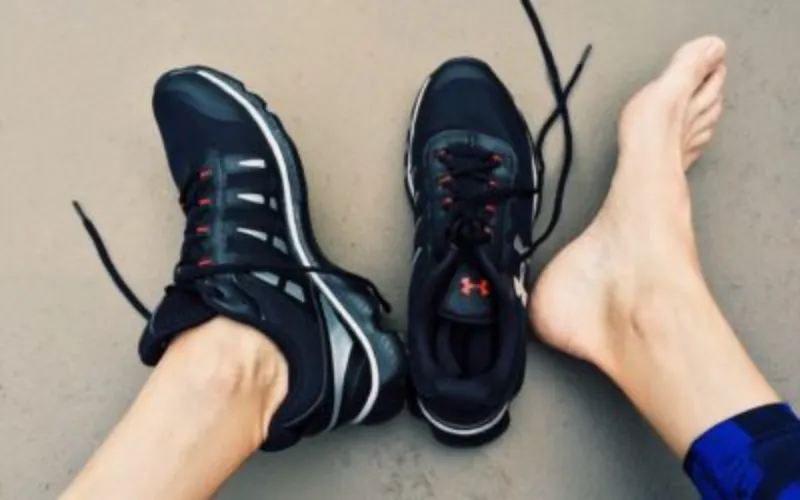At Kendal Physiotherapy we understand the frustration that achilles tendon pain can cause to all patients and particularly to runners. This article will help you understand why you have developed achilles tendon pain and how to make a full recovery .
Achilles tendon pain is not confined to runners and active people. There are a number of medical conditions that can result in achilles tendon pain referred to later in this article.
The achilles tendon attaches the calf muscles to your heel bone. It plays an important role in walking and running transferring movement from your calf muscles to enable the foot to push off.
Achilles tendinopathy is the result of tendon overload often caused by a relative increase in activity; often running volume and intensity or; an increase in hill running, or change of running terrain.
The relative increase in running aspect is important. If you have just started running only once a week this is a relative increase and the tendon may be overloaded by this increase. For other people the relative increase may be moving from one run a week to three runs a week or to doing faster running, longer runs or an increase in hill running.
Initial morning stiffness and discomfort .
In the early stages of tendinopathy the condition can easily go unnoticed. Early on the condition presents as foot stiffness in the achilles tendon when getting out of bed. This stiffness may initially only last a minute or two and can easily go unnoticed until it progresses to further stiffness and pain when getting up. The reason it goes unnoticed is as the tendon warms up the stiffness and the pain go away leaving the impression that there isn’t a problem. In the early stages you may also have some tendon pain at the beginning of a run which may disappear once warmed up, again giving the impression that there isn’t a problem. At this stage the stiffness and or pain usually returns after a period of rest following the run e.g several hours after running, perhaps after sitting down for a while, you get up and the tendon feels stiff or painful. It may also not be until the following morning again when the stiffness and pain reappear.
The stiffness and pain are signs that the tendon is not adapting to the increase in load. Runners generally don’t like giving in to pain and discomfort so continue with their running with the result that the condition progresses so that the morning stiffness and pain get worse. The initial pain at the beginning of a run takes longer to subside and then progresses to being painful throughout the run.
Eventually for some people the condition can progress to the stage where it is too painful to do any running at which point the runner has to stop.
Recovery
Good news. Most people can make a full return to running.
It generally takes 3-6 months to recover from achilles tendinopathy. The time depends on a number of factors including how far the condition has progressed to how well the patient adheres to a rehabilitation programme. Running usually has to be trimmed to a level that is not aggravating the condition. The level of trim will depend on how far the condition has progressed.
The tendinopathy is the result of overload. Initially the tendon needs to be ‘unloaded’ to a point where it is much less painful and stiff and then it needs to be appropriately strengthened so that it can gradually cope with increasing load. The unloading is the trimming of running and this has to be done alongside the progressive strengthening. As the tendon gains strength over 3-6 months the level of running can gradually be built back up. Too much running too soon will set the recovery back. For runners the recovery process requires both patience and determination. Patience to believe that it will get better and that you can make a full return to running and determination with the exercise recovery programme. Initially during the first weeks of rehabilitation exercises you are unlikely to see any improvement. It may take 8-12 weeks before an improvement is noticeable. The reason for this is that it takes time to build strength. We don’t gain tendon strength quickly, it is a gradual process. It’s easy to think that after 4-6 weeks of exercises it should be getting better but it is probably going to take double that time.
Strengthening the tendon involves appropriate, progressive loading. This might initially sound a bit strange given that we have said that the tendinopathy is caused by overloading. Running itself doesn’t strengthen the tendon but specific exercises do strengthen it.
Tailored strengthening programme
Kendal Physiotherapy will make a full assessment of your condition and advise on how to trim your running to a manageable level. We will also assess how far the condition has progressed and this will determine the starting point of your rehabilitation programme. We can support you to get back to full running by monitoring testing and progressing your rehabilitation exercises as well as advising on how to gradually progress your running to prevent any re-occurrence of the injury.
There are a number of conditions that can present as achilles tendon pain that are not caused by tendon overload due to running. Patients with Crohn’s disease or inflammatory arthritis can experience achilles tendon pain that mimics achilles tendinopathy. Some antibiotics can also cause achilles tendon pain. This is a side effect of a group of antibiotics called fluoroquinolones (sometimes used to treat respiratory illnesses and urinary tract infections).
